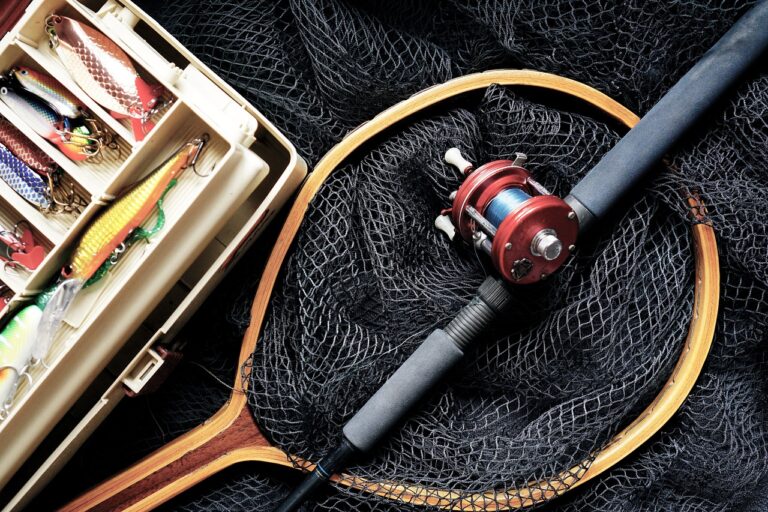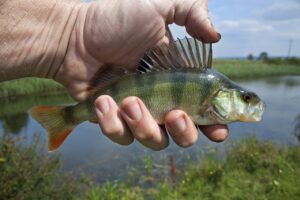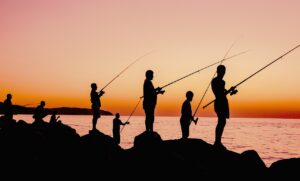We put together this guide of basic fishing tips to help you get started on your fishing journey. Learning to fish takes time and effort but is worth it. One of the most enjoyable aspects of fishing is learning new skills and techniques.
Even experienced anglers are constantly learning new techniques. Fishing can intimidate beginners at first. But we’re here to assist.
You will have learned the fundamentals of fishing by the end of this resource, and you will be ready to get out of the water and catch fish.
The key things to learn are:
- Casting the rod
- Choosing the right lure
- Where to catch the fish
- What fishing gear to use
FISHING TIPS FOR CASTING A FISHING ROD
Casting a fishing rod is one of the most basic skills you will need to learn if you want to be a successful angler.
It will take some practice to master, but with consistent practice, you should be able to get it down pretty quickly.
You will use one of two types of fishing rods and reels: spinning rods or bait-casting rods. Each of these casts behaves uniquely.
Casting Spinning Reels
Spinning reels are ideal for beginners; they are simple to use and relatively inexpensive.
If you’re new to fishing, we recommend a spinning rod and reel over bait-casting equipment.
The steps for casting a spinning reel are straightforward. What you must do is:
- Grab the rod and naturally hold it between your fingers. Hold it close to your side, around mid-waist level. The reel should be placed beneath the rod.
- Line up the bail, grab the line with your index finger, and pull it open.
- Allow about 10 to 18 inches of line to hang your lure.
- Raise your rod overhead and quickly bring it forward, pointing it at the location where you want your lure to land.
- With your index finger, release the pressure and allow your lure to pull the line out.
- Close the bail with your hand and prepare to reel in your lure.
Casting Bait-casting Reels
Bait-casting rods and reels are more sophisticated than spinning reels. They can be more difficult for beginners to adjust to, but they are essential when targeting larger fish or needing to cast with precision.
The steps for casting with bait-casting reels are:
- Grab the rod and naturally hold it between your fingers. With your thumb on the line, place the reel on top of the rod.
- Aim for your target with the rod tip just above eye level.
- While holding your thumb against the line, press the button to free the spool.
- Swing the rod over your shoulder and quickly bring it forward, pointing the tip of the rod at the target.
- As the rod moves forward, lift your thumb off the spool to allow the line to shoot off the reel.
- Place your thumb back on the spool when the lure hits the water.
Casting requires you to aim your rod at the target in one fluid motion. When you’re first starting out, breaking it down into steps will help. However, once you’re comfortable with the steps, try making the cast in one fluid motion.
DISCOVER HOW TO WORK YOUR LURES
To get lures swimming properly, each one will be slightly different.
The goal is to make your lure move through the water like real bait in order to entice fish to bite.
This is usually accomplished by varying your retrieval speed and twitching your rod tip.
EXPERIMENT WITH VARIOUS TACTICS
- Changing things up is sometimes the best way to get more bites.
- Experiment with different lures and colors, as well as fishing at different depths.
- Try working your lure slowly or quickly to see what works best in the waters you’re fishing in.
- When a fish isn’t responding to you, changing your tactics can help you land it.
HOW TO SET YOUR HOOK
A proper hook set can often mean the difference between catching and losing a fish. Many novice anglers are overly eager and try to bury their hook too soon, which leads to a missed opportunity.
You should set your hook after you feel the full weight of the fish.
Wait until you can feel the fish pulling on your line. Then, reel in any slack to keep your line tight, putting you in a better position to set your hook. Lift the rod tip quickly and forcefully to set your hook.
This is a general rule of thumb for rigging your hook. After enough practice, you’ll have a good idea of how much force and timing you need for a proper hook set.
BEST PLACES TO FISH
Look for Weeds
Many fish prefer to hide in the cover of weed beds before attacking their prey. Fishing near the weeds can be extremely fruitful.
Aquatic vegetation attracts insects, which attract baitfish, which attract larger fish. That is why you should definitely fish in the weeds.
Structure of Fish
Fish also hang out near structures because they are protected from predators, which allows them to ambush other fish. Branches, submerged trees or logs, rocks, and boat docks are all good places to fish.
Discover the Area
You’ll want to learn the area so you know where the aquatic vegetation is, where the cover and structure are, and what depths are available where you’re fishing.
If you can get your hands on a topographical map, that’s even better. When you know where the fish are likely to be, your chances of catching one increase dramatically.
Outlets and Inlets
Inlets and outlets often provide a nutrient-rich environment that attracts baitfish. Large fish are likely to follow where there are baitfish. You can find them where water enters or drains from a lake.
Purchasing Fishing Gear
Use the Proper Equipment
Understanding all the different gear options and when to use them is one of the most difficult aspects of fishing for beginners.
If you’re new to fishing, it’s a good idea to ask an angler friend what rod action, fishing line, and hook size you’ll need.
A basic spinning rod with a monofilament line will suffice for beginners.
Know Your Fishing Knots
There are many fishing knots that are appropriate for various fishing situations.
It is critical to learn how to tie these knots and when to use them. The Palomar knot is the first knot you should learn.
Match the Hatch
This phrase is commonly heard in the fishing community, and for good reason. It is effective.
This means you should match your bait or lure to what the fish are already eating in the waters you’re fishing in.
Using bait that resembles what the fish are already eating is often the most effective way to get them to bite.
Safety Equipment
Bring safety equipment on your fishing trip. Example: sunscreen, rain gear, PFDs, a first aid kit, hydration, and nutrition.
IMPORTANT FISHING TIPS
Stay Patient
Don’t get discouraged if the fish aren’t biting. Fishing is a game of patience. A good angler will experiment with a variety of lures and techniques to see what will get the fish biting.
Finding the fish isn’t always easy, and neither is getting them to bite. Stay calm and prepare to change where you are fishing and your techniques throughout the day to see what works.
Keep Quiet
Some fish can be easily spooked, so you don’t want to make too much noise when approaching them. Try to land your lures gently in the water.
Better yet, cast them past the strike zone and reel them into the hot spot to avoid spooking fish. If your lure lands directly on top of the fish, they may get spooked and swim away.
Have Your Fishing License
Check that you have a valid fishing license and/or stamps. Nobody wants to get into trouble and deal with the stress when the day was supposed to be about relaxing and having fun.
Learn about the Fish
Having a little knowledge about the fish you are targeting can make all the difference when fishing. Check out our resources on how to catch these popular game fish:
- Bluegill
- Crappie
- Northern Pike
- Rainbow Trout
- White Perch
SUMMARY
When you fish, all the different things you need to learn can be overwhelming. But don’t get too overwhelmed, and remember that even experienced anglers are constantly learning new things. Fishing is a never-ending learning experience. So, just take things one step at a time, and you’ll be catching fish in no time.





